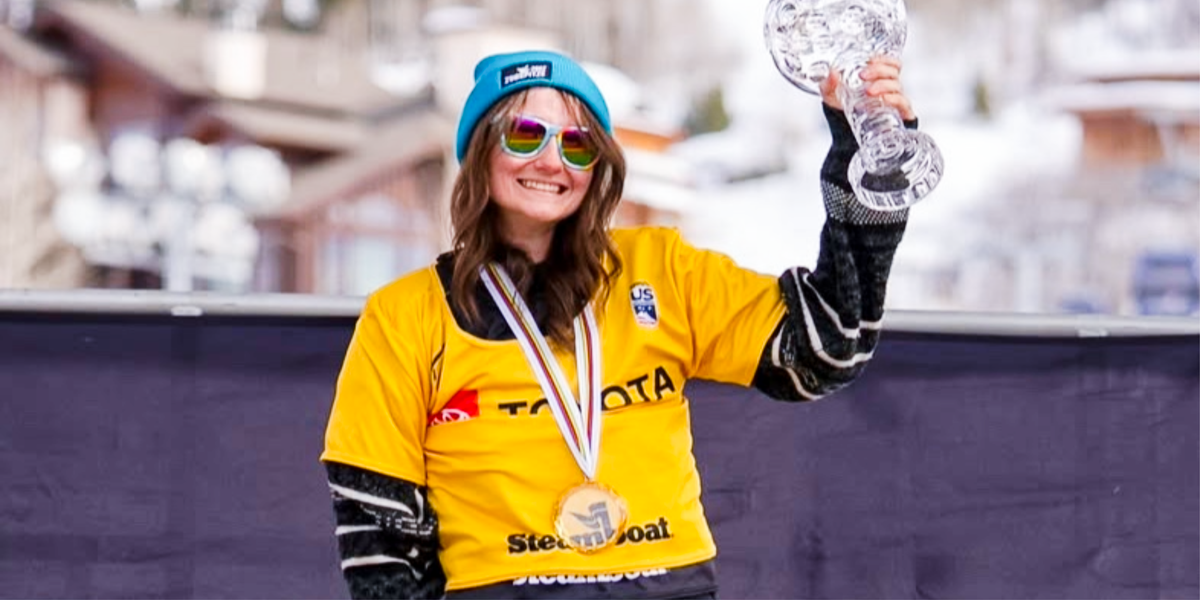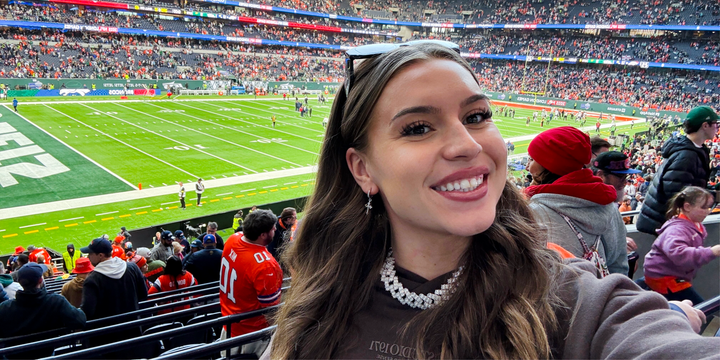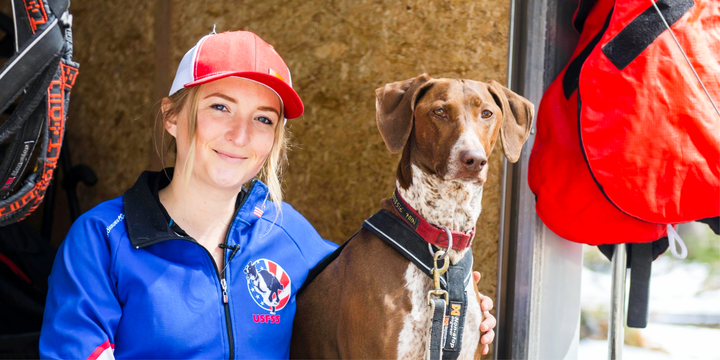The Architect of Absence
Izy Hicks tied for the 2025 Crystal Globe in women's upper-limb snowboarding—the highest honor in a sport the Paralympics doesn't recognize. She races on credit cards and secondhand gear, building a category that doesn't officially exist.

Izy Hicks and the Sport That Doesn't Exist Yet
Izy Hicks tied for the 2025 Women's Upper-Limb Snowboardcross Crystal Globe in March. The achievement represents the highest honor available in her discipline. It is also, technically, an award for excellence in a sport that the International Paralympic Committee does not recognize as existing.
This contradiction defines Hicks' career. She competes at the international level in a category that lacks the institutional validation of Paralympic inclusion. Women's upper-limb snowboarding operates in a peculiar athletic purgatory—sophisticated enough to crown world champions, marginal enough to force those champions onto secondhand equipment and credit card financing.
"The biggest breakthrough for me this season was continuing to show up—to training, to competitions, even when I felt discomfort or fear," Hicks says. The phrasing sounds like motivational platitude until she explains the mechanics. "Allowing myself to figure things out along the way and adjust both my riding and mindset gave me some flexibility in approach, which is critical in para-boardercross, a sport that is both high-risk and has a narrow competitive field."
Para-boardercross combines high injury risk with limited competitive depth, meaning each race carries outsize consequences for season standings and each training session represents financial investment with uncertain return. Continuing to appear—at training gates, at start houses, in moments of fear—becomes the technical skill that enables all others.
Hicks acknowledges the context of her achievement with characteristic precision. "While the smaller U.S. field played a role, tying for the Crystal Globe was still an unexpected and meaningful accomplishment. I'm proud of it, but what excites me most is the opportunity to use it as a platform to help grow the sport."
The Economics of Advocacy
The financial structure of World Cup snowboarding offers instructive context for understanding Hicks' situation. Top alpine skiers like Marco Odermatt earned over 880,000 Swiss francs in prize money during the 2024-25 season. Ski cross and snowboard athletes typically earn less than 123,000 Swiss francs annually. Para-snowboard operates outside these established prize structures entirely.
"Motivation isn't always easy, because this sport is expensive and resources are limited," Hicks says. "Grants help, but they only cover a fraction of the cost."
She details the specific arithmetic of competing without institutional support. "Skrimping and saving is a big piece of how I've been able to make it work; I've raced on second-hand equipment, traveled without dedicated coaching, and have had to put some things on credit."
The specificity matters because it distinguishes between athletic poverty—the temporary financial strain of early-career development—and structural absence. Hicks does not operate in a temporarily underfunded system awaiting maturation. She competes in a category the Paralympic system has not yet validated as worthy of resource allocation.
U.S. Ski and Snowboard operates a tiered funding model where A-Team athletes receive full support while B-Team through D-Team athletes pay increasing fees. Historical reporting indicates total annual travel expenses across all disciplines require approximately 1.6 million dollars. Para-snowboard operates outside these established structures for unrecognized categories, leaving athletes to construct individual funding solutions.
Hicks frames this reality as expected rather than exploitative. "I accepted from the start that being part of this sport also meant helping to build it," she says. "What drives me now is the growth I've seen training and competing with women who are pushing the level higher every season. My hope is that our collective progress makes the case for Paralympic inclusion."
The transformation of resource limitation from obstacle into shared construction project defines her approach. Her competitive work documents that the pathway produces elite-level athletes. The Crystal Globe matters not primarily as personal honor but as evidence the system functions.
The Reframing
Hicks started snowboarding at age ten with the National Ability Center in Park City. "As a kid I was timid and scared," she says, "but learning to ride gave me a big confidence boost and taught me that progress feels so much better than striving for perfection."
The evolution from that timid child to Crystal Globe tie required what Hicks describes as ongoing psychological reconstruction. "Growing up with a limb difference shaped how I saw myself and what I thought I could do. I had low expectations for myself and my future."
The mechanism for change involved learning to internalize external perception. "What's helped me most has been learning to see myself the way my coaches and instructors saw me: as capable, determined, and worth investing in. Their belief gave me a model for my own inner dialogue, which has evolved from being timid and uncertain to more resilient and confident."
This transfer of evaluative authority—from internal doubt to external affirmation to rebuilt internal confidence—represents the standard narrative of athletic development compressed and complicated by disability context. Hicks characterizes the reframing process as continuing rather than completed. "I had to reframe how I viewed myself and the challenges I faced as someone with a disability, which was uncomfortable at first and remains an ongoing process in my career."
The dual consciousness this produces appears throughout her self-assessment. She does not inflate her achievements beyond their context. She does not diminish them either. The Crystal Globe tied with one other athlete in a limited field still required consistency across multiple World Cup events. The accomplishment stands on its merits while acknowledging its specific parameters.
Training Without Endpoint
The International Paralympic Committee added para-snowboard to the Sochi 2014 Games after sustained advocacy led by Dutch athlete Bibian Mentel-Spee. The initial inclusion covered only lower-limb classifications in snowboard-cross time trial. The 2015 World Championships expanded to include upper-limb classifications, separating competitors into functional ability categories: SB-LL1 and SB-LL2 for lower-limb impairment, SB-UL for upper-limb athletes.
The Milano Cortina 2026 Paralympics will feature para-snowboarding events in three men's classifications and one women's classification. Men compete in SB-UL for upper-limb impairment and in SB-LL1 and SB-LL2 for lower-limb categories. Women compete only in the SB-LL2 lower-limb classification. The IPC announced in July 2023 that the program would include two events across these four classifications. Women's upper-limb snowboarding remains excluded.
This exclusion carries a documented history. Athlete Kiana Clay organized a petition before the Beijing 2022 Games advocating for women's upper-limb inclusion. The IPC cited insufficient competitor points—diminished by pandemic-canceled competitions—as justification for deferral to 2026. That deferral has now become another exclusion. The Milano Cortina program specification confirms no women's SB-UL events.
Hicks will race in the 2025-26 World Cup season knowing her category cannot advance to Paralympics in March 2026. "Preparation for World Cup competition is multi-faceted," she explains. "Dryland training and time on snow are huge factors in managing performance. Equally important is the mental side—investing in positivity and a growth mindset has been just as critical for me as my technical coaching."
The equal weighting of mental and technical preparation reflects the specific demands of competing without ultimate competitive venue. Traditional periodization builds toward major championship. Hicks builds toward undefined future recognition while maintaining present-tense performance.
"Because my category isn't yet recognized at the Paralympic level, balancing the financial reality with the investment in coaching is an ongoing challenge," she says. "I'm focusing on finding small milestones and wins in the 'gray area' between where the women's upper limb class stands today and the day it'll be included in the Paralympics. For me, it's about embracing the journey and celebrating incremental improvements along the way."
This gray area represents the operational reality of elite competition in unrecognized category. World Cup events provide comparative ranking and technical challenge. They do not provide the institutional validation, media attention, or resource access of Paralympic competition. Without incremental focus, competing in unrecognized category becomes exercise in sustained frustration. The gray area milestones transform each season from waiting period into active progress documentation.
The Paralympic cycle affects Hicks' strategic planning through U.S. national para-snowboarding team nomination timing. "The U.S. national para-snowboarding team makes its nominations every two years, so the Paralympic cycle plays a big role in how I plan," she explains. "With my category not yet recognized for the games, my focus is less about immediate qualification and more about building consistency, gaining experience on the World Cup circuit, and being ready to step up when the opportunity comes."
This strategic patience requires exceptional psychological management. Hicks must maintain elite-level training intensity and competitive performance without the motivational architecture of four-year Olympic cycle that structures most international sport. She competes in perpetual pre-qualifying phase, building consistency and experience on World Cup circuit while waiting for institutional acknowledgment.
Advocacy Through Excellence
"I see my role as bigger than just racing, it's about advocating for adaptive sports as a whole, helping people recognize them as unique sports with their own skill, strategy and excitement," Hicks says. "That's a message I try to carry into everything I do."
The framing matters because it locates value in the sports themselves rather than in inspirational narrative about overcoming disability. This distinction reflects broader tension within Paralympic movement between integration and distinctiveness. Sports seeking Paralympic inclusion must demonstrate sufficient competitive depth and technical sophistication to warrant resource allocation. Simultaneously, they must articulate what makes their specific classification meaningfully different from existing recognized categories.
Hicks advocates through sustained high-level performance that demonstrates competitive viability. Tying for Crystal Globe provides concrete evidence that women's upper-limb category produces legitimate world championship-caliber competition. Each World Cup start adds to participation data addressing IPC concerns about competitive depth. Each technical innovation in adaptive equipment or technique strengthens the argument for classification-specific recognition.
She articulates the specific stakes of Paralympic recognition with precision. "If Women's UL snowboarding were included in the Paralympics, it would change a lot for the next generation: it would give them access to resources, visibility, and the validation of knowing their sport is seen and valued on the world's biggest sporting stage."
Resources mean equipment access, coaching support, travel funding—the infrastructure Hicks currently constructs individually through secondhand purchases and credit financing. Visibility means media coverage driving sponsor interest and public recognition beyond World Cup circuit insiders. Validation means institutional acknowledgment that transforms personal athletic pursuit into recognized competitive pathway.
"Women's upper limb snowboarding has never been in the Paralympic games, so I hope to continue representing my category on the world cup circuit in hopes that one day we'll have a spot in the games," Hicks says. "For now, I'm aiming to make the US national para-snowboarding team after the Cortina 2026 games."
The timeline positions her competitive work within larger project of pathway construction. Recognition may arrive after her competitive career concludes. She accepts this possibility while continuing to build the case through excellence.
What Keeps Her Going
From her origin story, Hicks identified what sustains multi-year commitment to sport without ultimate competitive venue. "Sacrifice in my sport looks like long training hours on and off the hill, as well as a large financial commitment to technical coaching, travel costs, and equipment. Intense training and competition make for a difficult, but remarkably rewarding experience where I'm able to continually work on my mindset and performance."
She locates her drive in three interlocking motivations. "What keeps me going is my love for snowboarding, the opportunity to prove to myself and others that resilience and mindset can carry you further than circumstance, and that there's always something more to be done, whether it's improving my physical and mental performance, or contributing to growing my sport into one that can one day be in the Paralympic games."
The formulation reveals the psychological architecture enabling sustained elite performance under conditions that would break most competitive athletes. Love for snowboarding provides intrinsic motivation independent of external validation. The resilience demonstration addresses personal and collective proof of concept—that limitation of circumstance yields to sustained effort and mental management. The continuous improvement focus transforms indefinite timeline into active construction project rather than passive waiting period.
Hicks has constructed a competitive identity that functions without the terminal validation most elite athletes require. She competes in sport that exists everywhere except where it matters most. She builds competitive record that simultaneously documents her achievement and argues for her category's right to exist on sport's highest stage.
The Beijing 2022 exclusion cited pandemic-reduced participation points. The Milano Cortina 2026 exclusion continues without citing specific participation threshold for future inclusion. This indefinite deferral places athletes in sustained uncertainty about whether sustained performance will produce recognition or whether structural barriers exist beyond competitive merit.
Hicks chooses to operate as if merit-based evaluation will eventually prevail. "My hope is that our collective progress makes the case for Paralympic inclusion," she says. This choice represents strategic necessity rather than naivete. Without belief that sustained excellence produces recognition, competing in unrecognized category becomes unsustainable.
Whether that recognition arrives depends on factors beyond any individual athlete's control. Hicks can compete at Crystal Globe level. She can maintain training intensity through credit-card financing and secondhand equipment. She can accumulate World Cup results documenting competitive depth. She cannot unilaterally compel Paralympic recognition.
This gap between individual excellence and institutional validation defines her athletic career. The architecture of patience she has constructed enables what should be impossible—sustained world-class performance without world-class infrastructure. She has transformed institutional absence from career limitation into construction project, accepting that recognition may arrive for the next generation rather than her own.
"Learning to ride gave me a big confidence boost and taught me that progress feels so much better than striving for perfection," she said of her childhood introduction to snowboarding. The lesson applies at scale to her entire competitive career. She pursues progress in gray area between present exclusion and future recognition, finding meaning in incremental advancement rather than demanding perfect institutional validation before committing to excellence.
The Crystal Globe she tied for in 2025 stands as both personal achievement and evidence that women's upper-limb snowboarding produces world-class competition deserving of Paralympic recognition. Whether that recognition arrives in time for Hicks to compete at Paralympics remains uncertain. What is certain is that when recognition arrives—if it arrives—the pathway will exist because athletes like Hicks chose to compete excellently in sport that officially does not yet exist.




Comments ()